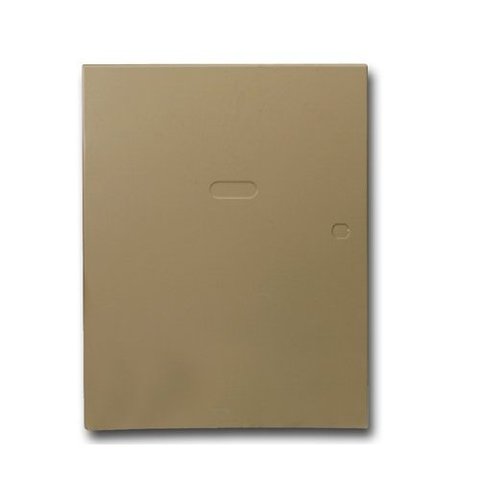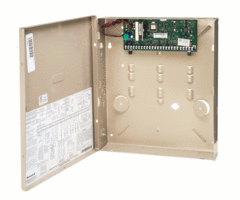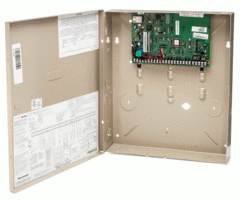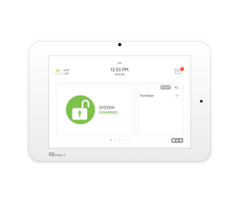If you're like the folks at Alarm Grid, then you're always looking for new and exciting ways that you can use your security system. One novel possibility is to have your system alert you if your pool or hot tub experiences an unusual temperature change. Today, we will explore how to do that.

As you likely know, using temperature sensors with an alarm system to monitor the ambient air temperature inside a building is nothing new. These devices are used to alert the user to a broken HVAC system that could result in them arriving to a very uncomfortable home, or even worse, major damage caused by the water pipes freezing. But if you want to monitor the water temperature of a pool or hot tub, then you have to get a little creative.
It goes without saying that there are several intrinsic challenges associated with setting up your alarm system to monitor the temperature of your pool or hot tub AND being alerted in the event that an unusual temperature change occurs. Basically, you need a waterproof temperature probe, a programmable temperature sensor that is compatible with that probe, AND a way to interface that temperature sensor with your alarm system. Only then will your security system keep you in the loop if your pool or spa heater goes kaput.
While there are certainly many combinations of waterproof temperature probes and programmable temperature sensors that you can use for this job, we will stick to the products that we have available on our site. This starts with the Winland TEMP-L-W Waterproof Temperature Sensor Probe, which can be safely submerged in your pool or hot tub and monitor temperatures ranging from -58°F to 158°F. It's the perfect probe for the job!
You can easily connect the Winland TEMP-L-W Probe with our selected programmable temperature sensor for the job, the Winland EA200 EnviroAlert. The reason why you need a programmable temperature sensor is because you will need to set a very specific range of temperatures to perform this task effectively. It isn't good enough to just have a very vague range of allowable temperatures here. A standard in-building temperature sensor that monitors for a broken HVAC system might be able to get away with that, but it won't do you much good if you hop in your pool and find that it's a chilly 50°F. Realistically, you will probably want to keep your pool within a very specific range, say 70°F to 80°F. And if you own a hot tub, then that range is probably even more restrictive, perhaps 98°F to 102°F. With that in mind, there isn't much room for error here. You need a digital programmable temperature sensor where you can set customizable high-low temperature limits. And as you can probably guess, the temperature sensor will alert your system if the detected water temperature goes outside these defined limits.
Please note that the EA200 only has one output function, so you can only monitor for low temp OR high temp. But only one probe is needed. If you really need to monitor for both low temp AND high temp, then you can get the Winland EA400 EnviroAlert instead, which has two (2) outputs. You can use one for low-temp monitoring alerts, and the other for high-temp monitoring alerts. But keep in mind that if you have both alert types set up, then you will need TWO (2) probes as part of the setup.
One thing to keep in mind though is that these temperature sensors are often not waterproof, so you may want to find some waterproof housing that you can keep the module inside. Remember, just because the probe is waterproof does not mean that its accompanying sensor can withstand the same conditions! The protection doesn't necessarily have to be anything super high-tech either. You may be able to get away with a plastic container with the probe running through a leak-proof fitting. Unfortunately, we don't offer any sort of waterproof contraption on our website, but your local department store can probably help!
Your last challenge is finding a way to interface the temperature sensor, in our case the Winland EA200 EnviroAlert, with your alarm panel. If you're working with a wired sensor like we are, then the standard practice is to connect it to a wired panel or a converter module. But using a complete wired to wireless converter for just one sensor is probably a bit excessive. Instead, you may look into a wireless transmitter. Many wireless door and window contact sensors have on-board terminals that you can use to connect a wired sensor. This will allow the wired sensor to communicate with the panel wirelessly. You will likely need to provide a power supply and backup battery to the equation when doing this with a powered device like a digital programmable temperature sensor, but that's to be expected when powering the device in the first place. You must also make sure the wireless sensor acting as the transmitter is compatible with your system. Some popular options for doing this include the Honeywell 5816 and the DSC PG9945. Remember to check compatibility if you are unsure as to what will work with your alarm system!
From there, it's as simple as enrolling the programmable temperature sensor with your system. You will actually be programming the wireless transmitter using its auxiliary input settings. Check the device manual to see if there's a specific Loop Number or other setting that you need to use. You will also need to configure the high-low temperature limits and the notification settings on the temperature sensor. You are making it so that whenever the detected temperature in your pool or spa goes outside the defined limits, the wired temperature sensor will tell the connected wireless transmitter to alert your system. Once this happens, a fault will occur on the associated zone, and the programmed Response Type will occur. A popular Response Type for this application is 24-Hour Auxiliary, though you will want to make sure the central station knows that this is for a pool or hot tub temperature zone, and not for a medical emergency zone.
If you have any questions about setting up a pool or hot tub temperature zone for your own security system, please reach out to us. We will be happy to help any Alarm Grid monitored customers with finding the right sensors and programming. The best way to reach us is to email support@alarmgrid.com. We're here to provide you with top-notch support and help from 9am to 8pm ET M-F. We look forward to hearing from you!



 Before we discuss the issue itself, we will first cover some terminology to ensure that everyone is on the same page. Many Honeywell VISTA Alarm Panels come in both SIA and non-SIA variants. For example, there is the
Before we discuss the issue itself, we will first cover some terminology to ensure that everyone is on the same page. Many Honeywell VISTA Alarm Panels come in both SIA and non-SIA variants. For example, there is the 
 Before we give our three (3) tips to follow, let's make sure we're all on the same page by explaining what Supervision Trouble normally refers to. Supervision Trouble occurs when a
Before we give our three (3) tips to follow, let's make sure we're all on the same page by explaining what Supervision Trouble normally refers to. Supervision Trouble occurs when a 






























 We do have one thing to mention for users of the Qolsys IQ Panel 2 Solar Integration. If you are using the IQ2 Solar Integration then, DO NOT UPGRADE TO 2.5.4
We do have one thing to mention for users of the Qolsys IQ Panel 2 Solar Integration. If you are using the IQ2 Solar Integration then, DO NOT UPGRADE TO 2.5.4